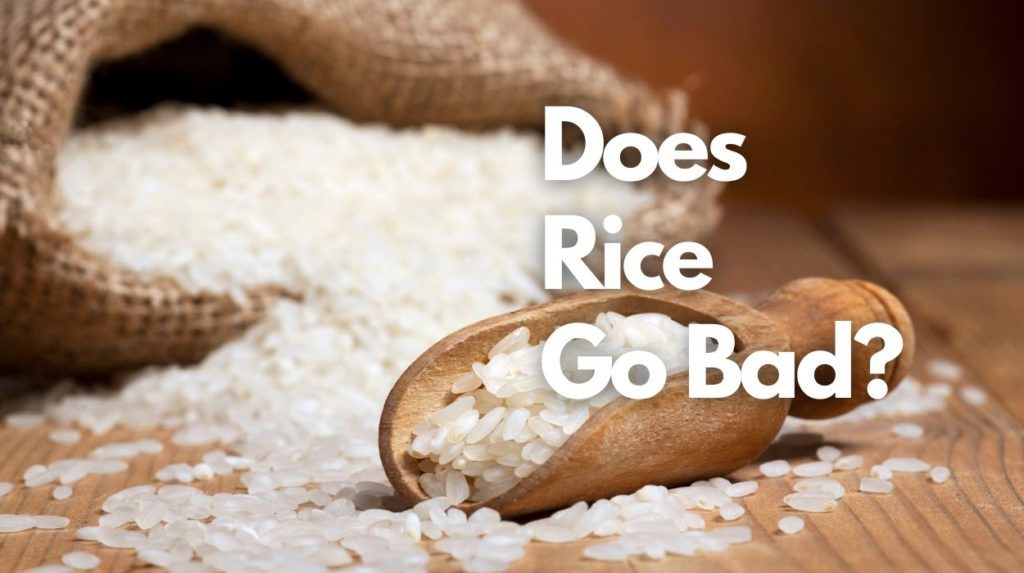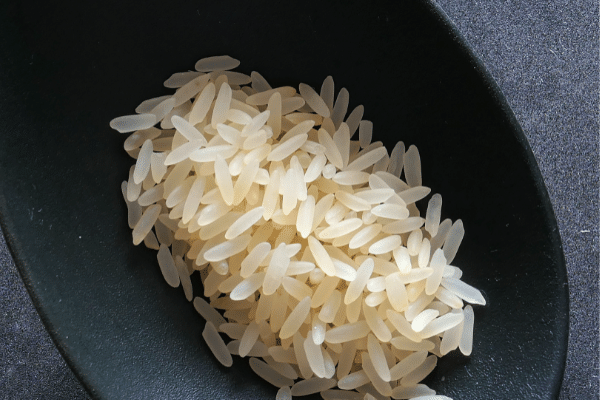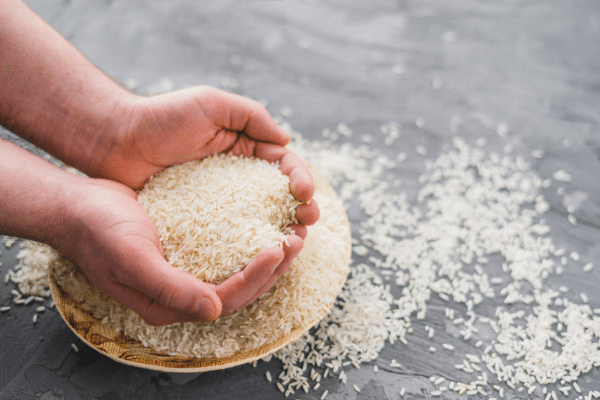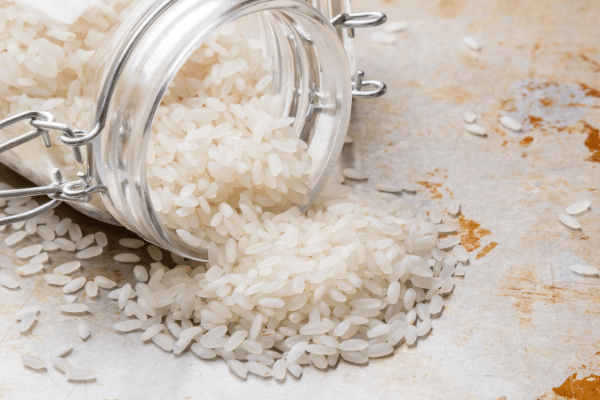
Did you know?
Americans consumed around 4.6 million metric tonnes of rice in 2021-2022. Such high numbers denote that rice is one of the household’s most common food ingredients. Due to its immense versatility, people often store it in bulk.
However, this method can come at a price due to the limited shelf life of rice. Even though it can last for 2 years, this is only possible in the presence of proper storage techniques.
Below you will find helpful tips on storage requirements, signs of spoilage, shelf-life, and more.
What is the Shelf-Life of Rice?
Uncooked white rice lasts indefinitely if properly stored in the pantry. As long as you store the white rice properly and there is no spoilage sign, it is safe and edible. Cooked white rice lasts for four to six days, especially when stored in a fridge.
In some cases, it lasts for seven to ten days, but it depends on how you store it. Transfer it to a freezer if you want to store cooked white rice for more than five days. Cooked rice lasts indefinitely in a freezer. But, the suggested time for storage in a freezer is four to six months.
You must not eat cooked rice stored outside a fridge for more than two days. It may get contaminated when stored outside for more than 48 hours.
| Items | Pantry | Fridge | Freezer |
| Uncooked White Rice | Indefinitely | Indefinitely | Indefinitely |
| Cooked White Rice | – | Three to Six Days | Six Months |
These periods for storage of cooked rice are approximate and may last even more if properly stored.
What are the Spoilage Signs of Rice?

Most white rice has an indefinite shelf-life, while uncooked brown rice lasts only for six to eight months in the pantry. Cooked brown rice has a shelf-life of five days in a refrigerator.
Whether you use brown or white rice, one thing you need to ensure is to keep the rice safe and protected from contaminants.
Brown rice has high oil content, and it won’t last too long. So, it will spoil more quickly than white rice. Certain spoilage signs will tell you when your rice has gone bad and is not edible.
Texture
Cooked rice will change its color as it starts to degrade. You will also see a texture change, and the grains will get crumbly, dry, and harder. The rice may also stick together and get clumpy. It indicates that the cooked rice has gone bad.
When exposed to high humidity, the texture changes, which accelerates mold and bacterial growth; even when stored in a fridge, the uncooked brown rice will turn oily and slimy with time, indicating that the rice has gone bad.
Smell
Since brown rice has a high amount of essential fatty acids, it starts oxidizing with time, and it makes the brown rice rotten after a couple of months of storing. It will radiate an unpleasant and typical rancid odor when it degrades.
The grains will release a sour and funky smell when the bacteria propagate in the rice. So, you must discard the rice in such a case.
Mold Growth
Unfortunately, mold starts growing in the rice when stored inaptly. It is not confirmed how quickly it will occur as it depends on the degree of moisture exposed to.
Insects
Insect infestations are a common issue with rice, predominantly brown rice. It occurs when the rice is stored in an opened bag in the kitchen pantry. Meal moths and rice weevils feed on these rice grains, and they even lay eggs in the package of the rice.
You will see holes and insects across the grains, and the rice may turn dusty with time. With time, it may also get mixed with larvae and eggs, and consuming such rice may make you sick.
What Happens When You Eat Spoiled Rice?

There is a minor difference in the structure of brown and white rice. Brown rice comprises germ, husk, and bran, filtered in their white counterparts. So, brown rice has a shorter shelf-life than white rice. But, brown rice is known for its valuable nutrients.
The residual outer shell of brown rice makes it perishable. So, if you eat spoiled brown rice accidentally, you are likely to get ill with symptoms of food poisoning. Cooked white rice stored for more than one week may contain Bacillus Cereus Spores. If you reheat and consume it, you will probably have health issues like diarrhea and vomiting.
The first symptom will show up within five hours of consumption, and it won’t last for more than 24 hours.
You must ensure to serve cooked rice immediately or refrigerate it for a couple of hours. You must not reheat the leftover rice more than one time.
Don’t leave the cooked rice at room temperature for too long to prevent mold spores from growing.
Can You Freeze Rice? Refrigerated Vs. Shelf-Stable

Freezing the rice is the best way to prevent it from contaminants. So, you can freeze the rice, regardless of the type you use. If you want to preserve your rice indefinitely and keep it in good condition, freeze your rice.
Uncooked rice can be frozen to prevent pests and mold from invading. Freezing protects the rice from contamination and extends the shelf-life and freshness.
But, you have to ensure that you freeze the rice in an airtight freezer-friendly container to prevent it from contamination. The uncooked white rice will last indefinitely, provided that it is stored in an airtight container and you regularly check the signs of contamination.
Refrigerated
If you want your rice to last longer, keep it in a fridge. However, it won’t make the rice last indefinitely; it helps to a certain extent.
Refrigeration gives your rice extra protection against pests and insects. Besides, it helps the rice sustain its freshness for a longer time than in the pantry.
Again, you have to ensure storing the rice in an airtight container. You need to ensure that the rice is safe and away from moisture.
Shelf-Stable
As mentioned, uncooked white rice lasts indefinitely, even when stored in the kitchen cabinet or pantry. The rice will sustain its quality and freshness when stored in cool and dry places in your pantry.
Unless the rice is contaminated, it is considered safe and edible. So, you can store the uncooked white rice in your pantry without worrying about spoilage.
The best way to prevent the rice from contaminants is by storing it in an airtight container. If you have opened the bag of rice, transfer it to an airtight container to preserve it longer.
What are the Best Ways to Store Rice?

Cooked rice is highly moist, and it quickly becomes the breeding ground for bacteria. So, you must store your rice in a cool environment, especially if you want to preserve it longer. For uncooked rice, it is best to store it in the pantry. But, there are certain rules to storing the rice and prolonging its shelf-life.
Store in Cool and Dry Places
It is important to keep the uncooked rice dry and away from moisture. If it is exposed to moisture or water, the risk of contamination increases, and mold grows on it.
Similarly, the rice must be stored in cool and dry locations until uncooked. The cool environment works fine for uncooked rice. If you reside in places with high humidity and temperature, it is best to store the rice in a freezer or fridge to keep it safe longer.
Store Rice in Airtight Container
If you don’t want your rice to get contaminated, store the rice in an airtight container. Whether you want to store it in your pantry, freezer, or fridge, an airtight container can keep your rice safe and prevent contamination.
After opening, you must transfer the uncooked rice to an airtight container and keep it tightly sealed to prevent moisture from leaking in. If you have an oxygen-absorbing container, use it to store the rice as it helps extend the shelf-life.
Store Rice with Dried Bay Leaves and Cloves
If you use brown rice regularly, store it carefully because it easily gets contaminated. It would help if you stored the rice with cloves, garlic, or dried bay leaves. It helps the rice stay safe and prevents insects and moisture from leaking.
Cloves, dried bay leaves, and garlic act as a repellent for the insects and bugs and prevent them from leaking inside the container to spoil the rice.
Alternatives for Rice if It Has Gone Bad
What can you do if your packet of rice is infested with mold and growth? Or what are some of the healthiest rice alternatives, in general? If you have such questions, the following substitutes shall help:
- Quinoa
- Farro
- Barley
- Freekeh
- Whole-wheat couscous
Frequently Asked Questions
Is It Safe to Consume White Rice When It Turns Yellowish?
It is common for white rice to turn yellowish, and it occurs when the rice is stored inaptly. The yellow mold causes it, and if you notice yellow color in your white rice, discard the rice as it has gone bad already. The yellow color in your white rice means mold growth, and eating it may cause yellow rice disease, which is life-threatening.
Are Storage Requirements for Brown and White Rice Same?
Uncooked brown rice is different from uncooked white rice because of its high oil content. White uncooked rice lasts indefinitely, but the uncooked brown rice can go rancid after a couple of months, depending upon how you store the rice. So, the storage requirement for brown rice is different from white rice.
How Long does it take to get Food Poisoning from Rice?
If you consume bacteria-infested rice, particularly Bacillus cereus bacteria, you might get food poisoning within 4-5 hours of consumption. While the symptoms might be mild, it is best to avoid such rice altogether.
What does Rancid Rice Smell Like?
Generally, rancid rice will give a foul odor. People often compare it with paint, but it depends on the quality of the rice.
The Bottom Line
Although manufacturers print the best-by date on every package of rice, uncooked white rice has an indefinite shelf-life. With proper storage, you can prevent contamination of uncooked white rice, and it helps to prolong the shelf-life and keeps it safe indefinite.
However, you must be careful with brown rice as it spoils quickly, especially when stored inaptly. So, you have to store it properly to keep it fresh longer. Don’t forget to check the spoilage signs before using the old rice.



